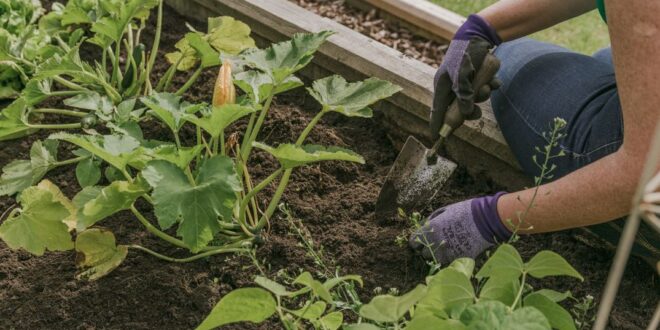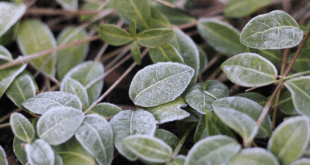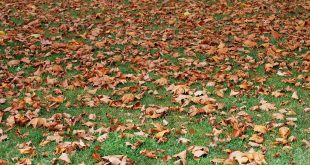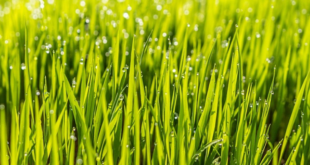In the realm of gardening, sustainability isn’t just a trend but a crucial approach for maintaining healthy, resilient landscapes.
Soil erosion is one of the most severe challenges for gardeners. By adopting a proactive approach and sustainable practices, growers can mitigate soil-connected risks and nurture flourishing gardens in harmony with nature.
Healthy soil in the garden is the key to successfully growing crops, thriving ecosystems and preserving the environment. Many environmentally friendly, regenerative practices can help to increase yields and improve soil health, including compost, regenerative no-till, crop rotation, and cover crops. You will discover how to detect soil erosion and how different practices encourage proper land use and environmental sustainability, resulting in the growth of healthy crops.
Why Soil Erosion is Dangerous
Despite the naturalness of this phenomenon, it poses a threat. It is also important to note that human activity can aggravate this problem or, conversely, minimize risks. Wind, rainwater and other weather conditions cause the top layer of soil to move. In gardens, this can lead to loss of fertility.
The effects of soil erosion can become a severe threat that will result in the land no longer being able to be farmed. For this reason, many agricultural civilizations have declined and are now reminders of the need to protect our natural resources.
Water quality is seriously degraded by erosion as wind and runoff carry soil into bodies of water that may contain nutrients or fertilizers. It can subsequently negatively affect aquatic life and the quality of drinking water.
The Vital Role of Sustainable Gardening
Cover Crops and Mulching:
Growing cover plants is a reliable way to protect the land. Plants such as clover or buckwheat are suitable for this purpose. Gardeners can also choose other legumes or grasses as a cover crop and plant them at summer’s end. These plants then can release essential nutrients to nourish future crops. Organic mulch, including straw or wood chips, helps to resist erosion and promotes moisture retention.
Terracing and Contour Planting:
Terracing and contour planting are effective techniques that can help create a structured layout in a garden. Farm terracing is a soil conservation method that helps prevent rainwater from accumulating on sloping lands and causing severe erosion. Terraces consist of ridges and channels that are built across the slope.
These practices help to reduce the flow of water and its erosive power. They also improve water absorption, prevent runoff, and reduce the risk of soil erosion. Terracing enables gardeners to plant gardens on slopes by dividing the long slope into a series of shorter, more level steps. These level steps make heavy rainfall soak into the soil rather than run off, which helps prevent erosion.
Use of Permeable Surfaces:
Consider choosing porous surfaces rather than impermeable ones. Pervious concrete is a popular material used for constructing permeable pavements. It can be used for sidewalks, driveways, parking lots, and pedestrian plazas. In the garden it can help to reduce the runoff by allowing rainwater to filter through the surface and into the ground, minimizing the risk of flooding and pollutants entering waterways.
Permeable pavers with larger joints can be laid over sand and gravel, enabling water to penetrate from the gravel layer to the soil below. Transparent crushed stone chips fill the gaps between pavers, creating porosity. Although expensive, they come in various colors and designs and must be properly designed to function efficiently.
In addition, porous concrete or gravel can be used for the control of soil erosion, such as stabilizing embankments, slopes, and waterbody lines. Its ability to manage water flow makes it valuable in preserving natural landscapes and preventing soil loss.
Planting Windbreaks:
Windbreaks may consist of trees, shrubs or hedges. By planting these plants, gardeners can create a natural barrier to reduce wind, which is one of the causes of soil erosion. Plant roots hold soil and absorb excess water, helping maintain topsoil and water quality. Windbreaks also create a microclimate that also promotes garden health.
Benefits Beyond Erosion Control
Climate change is forcing growers to look for and invent adaptation methods. It is necessary to apply practical solutions to increase yields and remember about sustainability in such conditions. Gardeners can do everything they can to combat erosion. Of course, humans can’t control the weather, but we can protect the environment by maintaining healthy soil through sustainable practices. It brings many different benefits.
Biodiversity Conservation:
A sustainable garden supports diverse plants and animals, promoting biodiversity conservation by providing habitat niches for beneficial insects, birds, and other wildlife.
Water Conservation:
Sustainable gardening practices involve effective water management. The list may include methods such as rainwater harvesting and growing drought-resistant plants. Controlling erosion in various ways can reduce the negative impact of gardening on the environment by preventing sediment and pollutants from entering waterways, degrading water quality and harming aquatic life.
Strengthening Land Health :
Adopting more environmentally friendly practices helps to improve soil structure and also supports organic matter in the soil. So, in addition to the direct goal of minimizing the effects of erosion, it is also possible to improve the process of plant development and nutrient absorption.
Challenges and Continuous Improvement
Sustainable gardening offers many benefits, but nothing in this world is perfect. First, you need to choose methods based on the needs of the garden and the conditions in which it is located. Secondly, introducing new practices and developing new habits requires effort and time. However, the long-term benefits for the garden and the environment make these changes worthwhile.
Nurturing Gardens for Generations to Come
With climate fluctuations, soil health is more important than ever. The resilience of crops to various threats, including drought and disease, can be improved. Healthy soil ensures beautiful landscapes, productive crops and a bright future for future generations.
Sustainable gardening is all about caring for our planet and creating thriving green spaces. Controlling soil erosion through eco-friendly practices helps solve many problems of the present and future. Gardeners can contribute to developing a sustainable future by maintaining healthy soil and overall ecosystems.
 Gardeners Club The Gardeners Club is a free to join online club for everyone with an interest in gardening and gardens.
Gardeners Club The Gardeners Club is a free to join online club for everyone with an interest in gardening and gardens.






